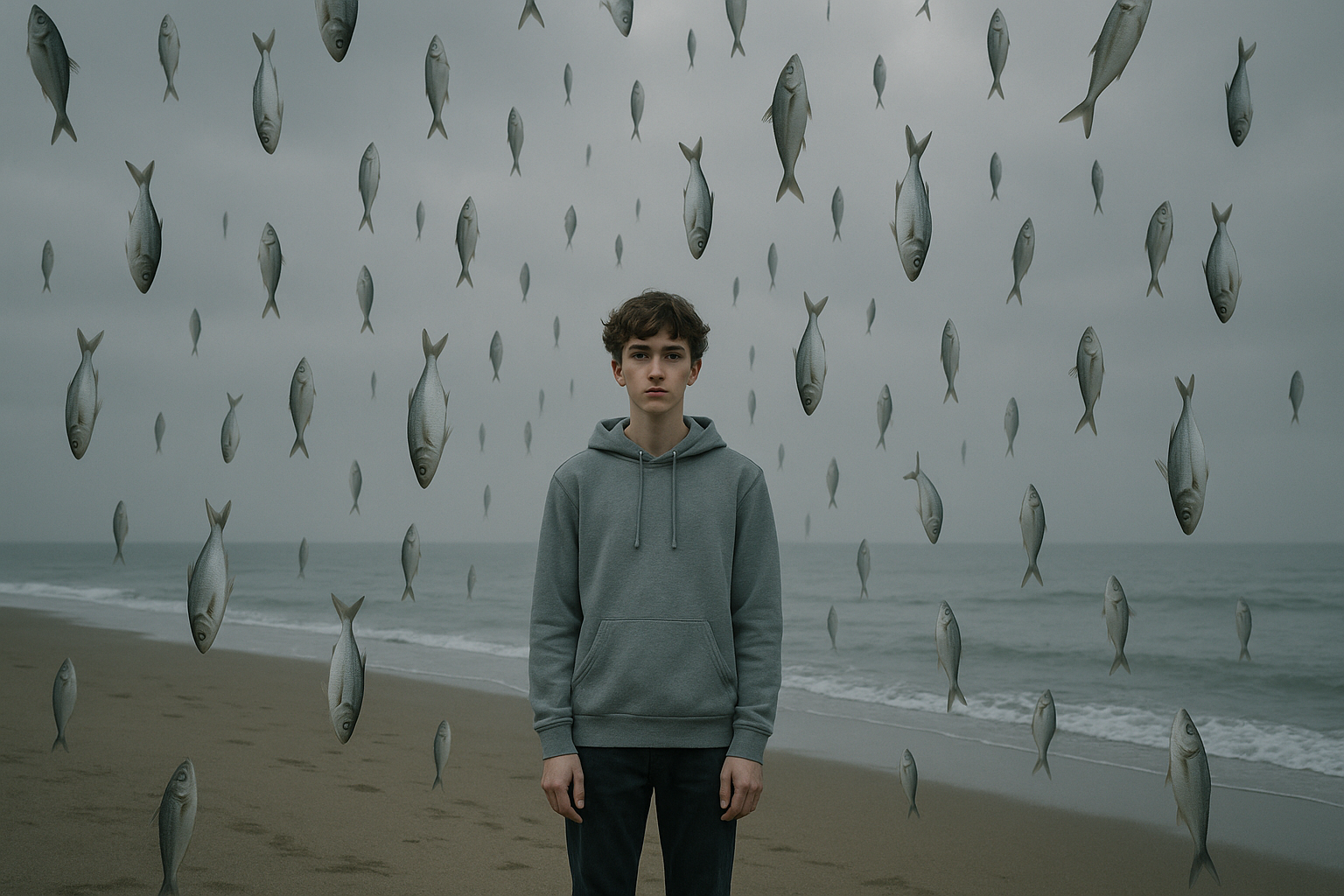Between Dream and Reality
Discover Haruki Murakami’s “Kafka on the Shore”, a masterpiece of magical realism that explores solitude, identity and the mysteries of existence. A must-read for souls in search of depth and reflection.
Introduction
“Kafka on the Shore”, published in 2002, is a captivating work by Haruki Murakami, blending magical realism, philosophy and metaphysical adventure. This complex, spellbinding novel tells the parallel stories of Kafka Tamura, a teenager on the run, and Nakata, a simple-minded old man who can talk to cats. Through their journeys, Murakami weaves a narrative where destiny, conscience and the unconscious intersect.
Summary and structure
Kafka Tamura flees his home in Tokyo to escape an Oedipal curse and a tumultuous relationship with his father. His journey takes him to a private library in Takamatsu, where he meets characters who will help him confront his past. At the same time, Nakata, after a mysterious incident in his childhood, loses his ability to read and write, but acquires the ability to communicate with cats. Their stories intertwine in mysterious ways, leading to surprising revelations about their connection.
Themes and analysis
In “Kafka on the Shore”, Murakami explores themes of loneliness, the quest for identity, and overcoming the past. The boundary between the real and the surreal is constantly blurred, inviting the reader to question the nature of reality. The novel also tackles the complex relationship between fate and free will, through the journeys of Kafka and Nakata, who seem to be guided by forces beyond their control, while making choices that will determine their future.
Characters and development
Kafka Tamura is an introspective protagonist, struggling against a family prophecy while searching for his place in the world. Nakata, with his simplicity and purity, offers a poignant contrast, embodying an atypical wisdom and acceptance of the inexplicable. Secondary characters, such as Oshima, the librarian, and Miss Saeki, add layers of complexity and mystery, each playing a key role in Kafka’s evolution.
Impact and reception
On its release, “Kafka on the Shore” was hailed for its originality, thematic depth, and bold narrative. Murakami was recognized for his ability to fuse the mythical, the psychological and the everyday into a spellbinding story. The novel reinforced his reputation as a world-renowned author, attracting both critics and admirers for his unique style and existential questions.
Why read this book?
Reading “Kafka on the Shore” is an unforgettable literary experience, defying narrative conventions and inviting deep reflection on universal questions. It’s a work for those who seek in literature not only an escape but also a confrontation with the mysteries of existence. Murakami has mastered the art of blending the philosophical with the fantastic, making this novel essential for fans of deep, complex narratives.
Conclusion
“Kafka on the Shore” is a masterly exploration of the human soul, a journey through the labyrinths of consciousness that remains etched in the reader’s memory. Haruki Murakami deploys all his talent to create a world where every detail has its importance, where every character contributes to a larger quest for meaning and truth.
Latest Reviews & Analyses
Stay Updated with Our Latest Reviews
Join our community to receive exclusive insights and updates on groundbreaking literary works.
Find Your Next Literary Adventure
What Our Readers Are Saying

Alex Jonhson
“A treasure trove of insights and critiques that deepened my appreciation for classic and contemporary works alike.”





